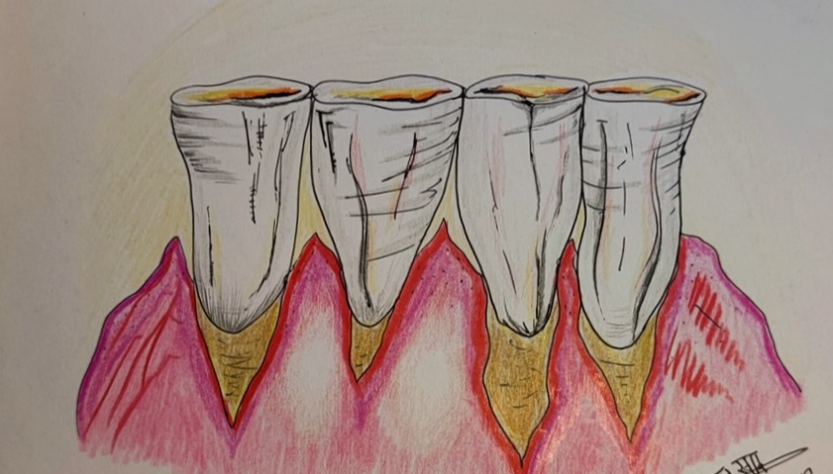The term “gingival recession” refers to the oral exposure of the root surface owing to the apical shift of the gingival margin away from the cementoenamel junction (CEJ). It is a common condition that poses some difficulties for dental professionals because of the uncertain etiology. Although various predisposing factors, including mechanical trauma, inflammation in the periodontal tissue, and bone dehiscence, have been found to play a role in the development of gingival recession.
However, many dental conditions go unnoticed by patients, gingival recession can often be visible to patients and for which they may seek advice of a Dentist. Gingival recession usually creates an esthetic problem, especially when such problem affects the anterior teeth and anxiety about tooth loss due to progression of the destruction. It may also be associated with dentine hypersensitivity, root caries, abrasion and/or cervical wear, erosion because of exposure of the root surface to the oral environment and an increase in accumulation of dental plaque.
Despite the common observation in adult subjects, the prevalence, extension, and severity of gingival recessions presents considerable differences between study populations. Prevalence indicates the cases or occurrences of gingival recession; extension corresponds to the number of teeth affected by gingival recession and severity signifies the total root surface exposed by the gingival recession, i.e., the linear vertical height of the gingival recession. Epidemiologic studies disclose significant information on prevalence and severity of a disease in a population and can be used to predict the disease pattern, progression, risk factors and treatment necessities.
The etiology of gingival recession is multifactorial. Several factors may play a role in gingival recession development such as excessive or inadequate teeth brushing, destructive periodontal disease, tooth malposition, alveolar bone dehiscence, high muscle attachment, frenum pull and occlusal trauma.
Other causative factors that have been reported are iatrogenic factors (orthodontic, smoking, or prosthetic treatment…etc.).



